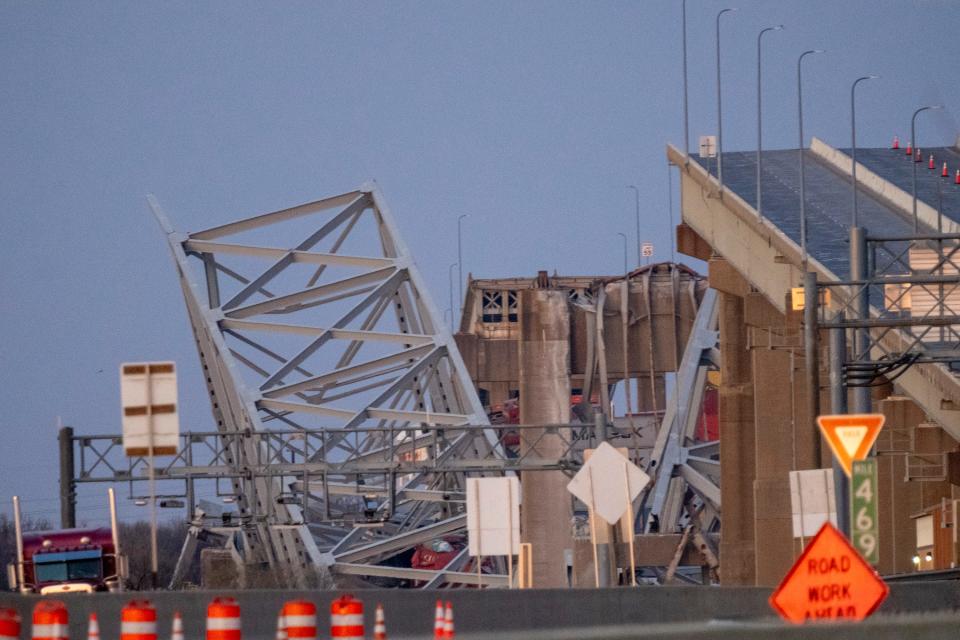Why did Francis Scott Key bridge collapse so catastrophically? It didn't stand a chance.
The Francis Scott Key Bridge stood little chance: When the loaded container ship Dali destroyed one of the bridge's main support columns, the entire structure was doomed to fail.
"Any bridge would have been in serious danger from a collision like this," said Nii Attoh-Okine, professor and chair of civil and environmental engineering at the University of Maryland.
Bridges work by transferring the load they carry ‒ cars, trucks or trains ‒ through their support beams onto columns or piles sunk deep into the ground.
But they also depend on those support columns to hold them up.

When the 984-foot Singapore-flagged Dali took out that column, the bridge was inevitably going to fall, said Benjamin W. Schafer, a civil engineering professor at Johns Hopkins University in Baltimore.
“You go frame by frame in the video and you can see the support removed, and then as you watch, the entire structure comes down," he said. “Literally the whole bridge comes down as a rigid body.”
Opened in 1977, the bridge was 1.6 miles long and was the world's third-longest continuous-truss bridge span, carrying about 31,000 vehicles a day.
Similarly designed bridges have a long history of catastrophic failure, but those failures more typically come from a problem within the bridge itself.
Though modern bridges are typically designed so a small failure in one area doesn’t "propagate" to the entire bridge, steel-truss structures are particularly at risk. One study found that more than 500 steel-truss bridges in the United States collapsed between 1989 and 2000.
Truss-style bridges are recognizable by the triangular bracing that gives them strength. They are often used to carry cars, trucks and trains across rivers or canyons.
Similar bridges have been weakened by repeated heavy truck or train traffic, according to experts. But in this case, the bridge's design and construction probably played little role in the collapse, Attoh-Okine and Schafer said.
“This is an incredibly efficient structure, and there’s no evidence of a crucial flaw," Schafer said. “If that had been a highway bridge, you would have watched one concrete beam (fall), but in this case, it's dramatic, like a whole pile of spaghetti."
The bigger question, the two experts said, is the long-term impact the collapse will have on shipping and vehicle traffic all along the East Coast. Although there are tunnels serving the area, they are typically off-limits to gasoline tankers and other hazardous-materials carriers, which would require significant rerouting.
Additionally, Baltimore is the nation's 20th-busiest port, according to the federal Bureau of Transportation Statistics. Workers there imported and exported more than 840,000 cars and light trucks last year, making it the busiest auto port in the nation, according to the governor's office.
"It's going to change the whole traffic pattern around the East Coast, as a cascading effect," Attoh-Okine said.
This article originally appeared on USA TODAY: Francis Scott Key bridge didn't stand much chance once disaster struck

